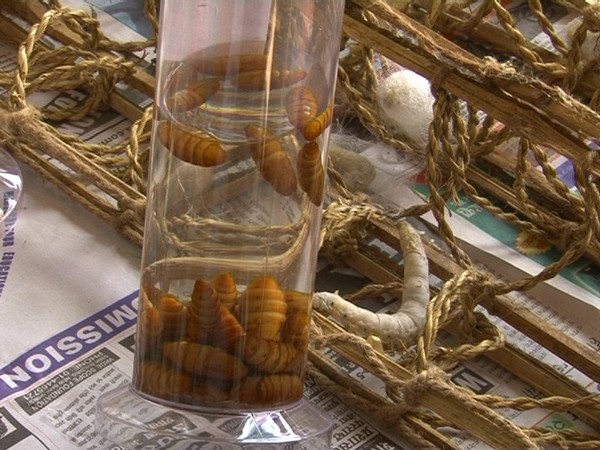Shillong (Meghalaya): Meghalaya’s silk industry has emerged as the engine to spur economic growth in the region.
Meghalaya, one of the major silk producers of the country, has, over the years, come out with various schemes and projects for the holistic development of its silk production.
The government, in this regard, organised a one-day ‘Mini Resham Krishi Mela’.
The fair was attended by around 200 silk farmers from across the state held at Ummulong village in West Jaintia Hills who interacted with the experts.
Apart from the programme, an exhibition was also held at the venue, where various silk products and weaving and life-cycles of various silkworms were showcased to the participants.
Addressing the farmers, Dr Collin Z. Renthlei, a senior scientist at the Central Silk Board Research Centre, said, “Through this programme, we are trying to encourage the farmers by recognising their work throughout the year in rearing silkworm. On this occasion, we gave them awards and shared our technology with them.”
Meghalaya being the hub of silk farming in the northeast, the state sericulture and weaving department is striving to promote and encourage farmers and youth to take up silk farming as an alternate source of income.
The Textile Ministry here has implemented two schemes for silk production and development-the Integrated Sericulture Development Project (ISDP) and the Intensive Bivoltine Sericulture Development Project [IBSDP] covering Mulberry, Eri and Muga.
Under the ISDP scheme, Muga farming is being implemented in West Khasi Hills and West and North Garo Hills, whereas Mulberry is being grown in Jaintia Hills and Eri in Ribhoi district.
Speaking on the occasion Sanjit K. Barchung, Director Sericulture, Government of Meghalaya, said, “The future of the sericulture industry in Meghalaya is good because we are getting schemes from the central government and they are very helpful. We are also getting funds for maintenance but that is not sufficient. So the funds from the centre will help the farmers and the department and help the income of the farmers, especially, Eri, mulberry and Muga farmers because demand is increasing day by day after the intervention by the Central Silk Board.”
Through the implementation of such schemes and projects, and providing integrated training to the farmers on technology, scientific way of hatching and rearing silkworms will improve the quality silk production in the state. It will help enhance the standard of living of the silkworm farmers.(ANI)

